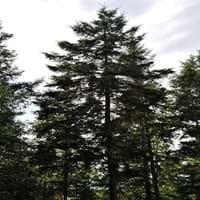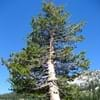Life Span
Perennial
Annual or Biennial
Type
Needled or Scaled Evergreen
Vegetable
Origin
Northeastern United States, North-Central United States, Alaska, Canada
Europe, Northern Africa, Asia
Types
Oriental spruce, Bog spruce, Weeping spruce
Not Available
Habitat
Moist Soils, Slopes, Swamps, Well Drained
Coastal Regions, Marshy ground, Wet ground
USDA Hardiness Zone
1-6
Not Available
Sunset Zone
A1, A2, A3, 1a, 1b, 2a, 2b, 3a, 3b, 4, 5, 6, 7
Not Available
Habit
Narrow Upright/Fastigiate
Upright/Erect
Flower Color Modifier
Bicolor
Bicolor
Fruit Color
Pink
Tan, Brown
Leaf Color in Spring
Green, Sea Green, Blue Green, Gray Green
Light Green
Leaf Color in Summer
Blue Green, Gray Green
Green, Light Green
Leaf Color in Fall
Blue Green, Gray Green
Green, Light Green
Leaf Color in Winter
Blue Green, Gray Green, Dark Green
Not Available
Leaf Shape
Needle like
Irregular
Plant Season
Spring, Summer, Fall, Winter
Spring, Summer
Sunlight
Full Sun, Partial Sun
Full Sun
Type of Soil
Clay, Loam
Loam
The pH of Soil
Acidic, Neutral
Neutral, Alkaline
Soil Drainage
Average
Well drained
Bloom Time
Not Available
Late Spring
Tolerances
Drought
Drought
Where to Plant?
Ground
Container, Ground
How to Plant?
Cuttings, Seedlings
Seedlings, Transplanting
Plant Maintenance
Medium
Low
Watering Requirements
Average Water Needs, Do Not over Water, Requires regular watering
Keep ground moist, Requires regular watering
In Summer
Lots of watering
Lots of watering
In Spring
Moderate
Moderate
In Winter
Average Water
Average Water
Soil pH
Acidic, Neutral
Neutral, Alkaline
Soil Type
Clay, Loam
Loam
Soil Drainage Capacity
Average
Well drained
Sun Exposure
Full Sun, Partial Sun
Full Sun
Pruning
Pinch Tips, Remove crossing or rubbing branches, Remove damaged leaves, Remove dead branches, Remove dead leaves, Remove dead or diseased plant parts
Remove damaged leaves, Remove shoots
Fertilizers
All-Purpose Liquid Fertilizer
Less fertilizing
Pests and Diseases
Red blotch
Bacteria, Downy mildew, Fungal Diseases, fungus, Mosaic viruses, Pink Root, Red blotch
Plant Tolerance
Drought
Frost
Flower Petal Number
Single
Single
Fragrant Bark/Stem
No
Yes
Foliage Texture
Fine
Coarse
Foliage Sheen
Glossy
Glossy
Attracts
Birds
Insects, Mice, Rodents, Spider Mites
Allergy
Dermatitis
Irritation to stomach
Aesthetic Uses
Showy Purposes
Not Used For Aesthetic Purpose
Beauty Benefits
Good for skin
Good for skin, Improve skin condition, Moisturizing, Skin Problems
Environmental Uses
Air purification, Shadow Tree
Air purification, Food for animals, Food for birds, Food for insects
Medicinal Uses
anti-inflammatory, Disinfectant, Kidney problems, Odontalgic, Poultice, Salve, Stomachic, tuberculosis, Vulnerary
Cancer, Combats Stress, Eye Problems, High blood pressure, High cholestrol, Indigestion, Inflammation, Weight loss
Part of Plant Used
Flowers, Inner Bark, Seeds
Leaves, Seeds
Other Uses
Disinfectant, Gum, Paper pulp, Pitch, String, Used as a dye, Used in paper industry, Waterproofing
Employed in herbal medicine, Oil is used in perfume, soaps, creams, etc., Used As Food, Used for its medicinal properties, Used as a spice
Used As Indoor Plant
No
Yes
Used As Outdoor Plant
Yes
Yes
Garden Design
Bog Garden, Screening, Wind Break
Container, Edible, Herb / Vegetable
Botanical Name
PICEA mariana
APIUM graveolens
Common Name
Black Spruce, Bog Spruce, Swamp Spruce
Celery
In Hindi
Black Spruce Tree
अजवायन
In German
Schwarz Fichte
Sellerie
In French
Noir Épicéa
Céleri
In Spanish
Negro árbol de abeto
Apio
In Greek
Μαύρο Spruce Tree
Σέλινο
In Portuguese
Árvore Spruce Preto
Aipo
In Polish
Czarny Świerk Drzewo
Seler
In Latin
Niger abiegnis
apium
Phylum
Coniferophyta
Tracheophyta
Class
Pinopsida
Magnoliopsida
Clade
Not Available
Angiosperms, Asterids, Eudicots
Tribe
Not Available
Apieae
Subfamily
Pinoideae
Apioideae
Number of Species
Not Available
Not Available
Importance of Black Spruce and Celery
Want to have the most appropriate plant for your garden? You might want to know the importance of Black Spruce and Celery. Basically, these two plants vary in many aspects. Compare Black Spruce and Celery as they differ in many characteristics such as their life, care, benefits, facts, etc. Every gardener must at least have the slightest clue about the plants he wants to plant in his garden. Compare their benefits, which differ in many ways like facts and uses. The medicinal use of Black Spruce is anti-inflammatory, Disinfectant, Kidney problems, Odontalgic, Poultice, Salve, Stomachic, tuberculosis and Vulnerary whereas of Celery is Cancer, Combats Stress, Eye Problems, High blood pressure, High cholestrol, Indigestion, Inflammation and Weight loss. Black Spruce has beauty benefits as follows: Good for skin while Celery has beauty benefits as follows: Good for skin.
Compare Facts of Black Spruce vs Celery
How to choose the best garden plant for your garden depending upon its facts? Here garden plant comparison will help you to solve this query. Compare the facts of Black Spruce vs Celery and know which one to choose. As garden plants have benefits and other uses, allergy is also a major drawback of plants for some people. Allergic reactions of Black Spruce are Dermatitis whereas of Celery have Irritation to stomach respectively. Having a fruit bearing plant in your garden can be a plus point of your garden. Black Spruce has showy fruits and Celery has no showy fruits. Also Black Spruce is flowering and Celery is not flowering . You can compare Black Spruce and Celery facts and facts of other plants too.





